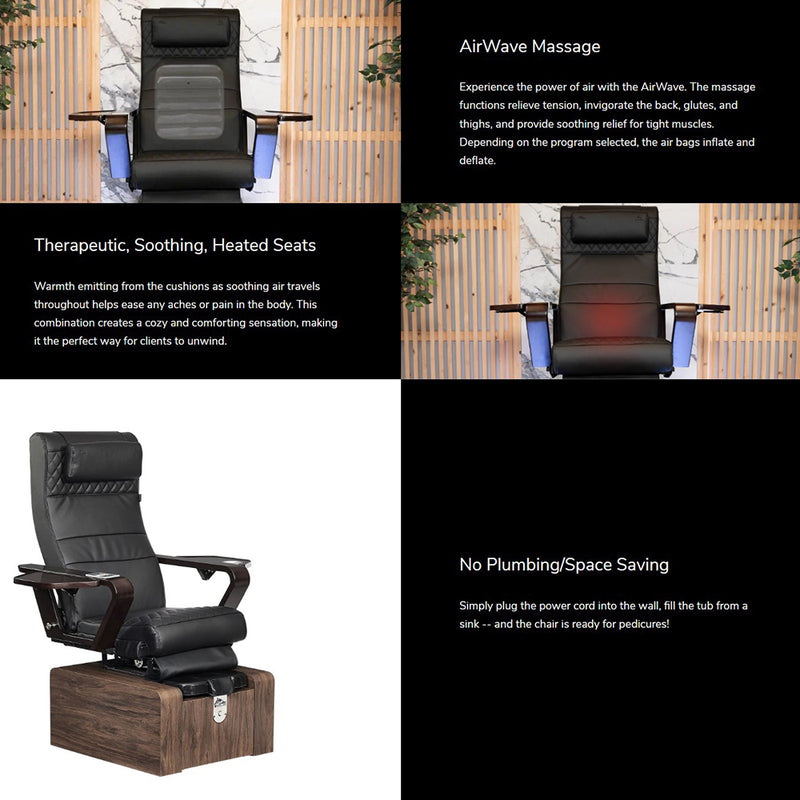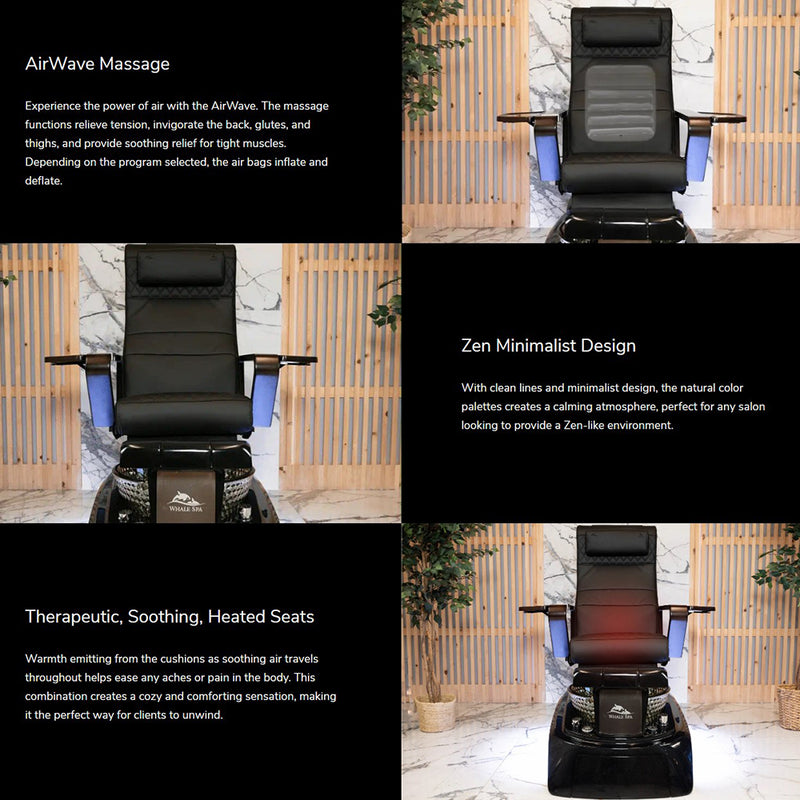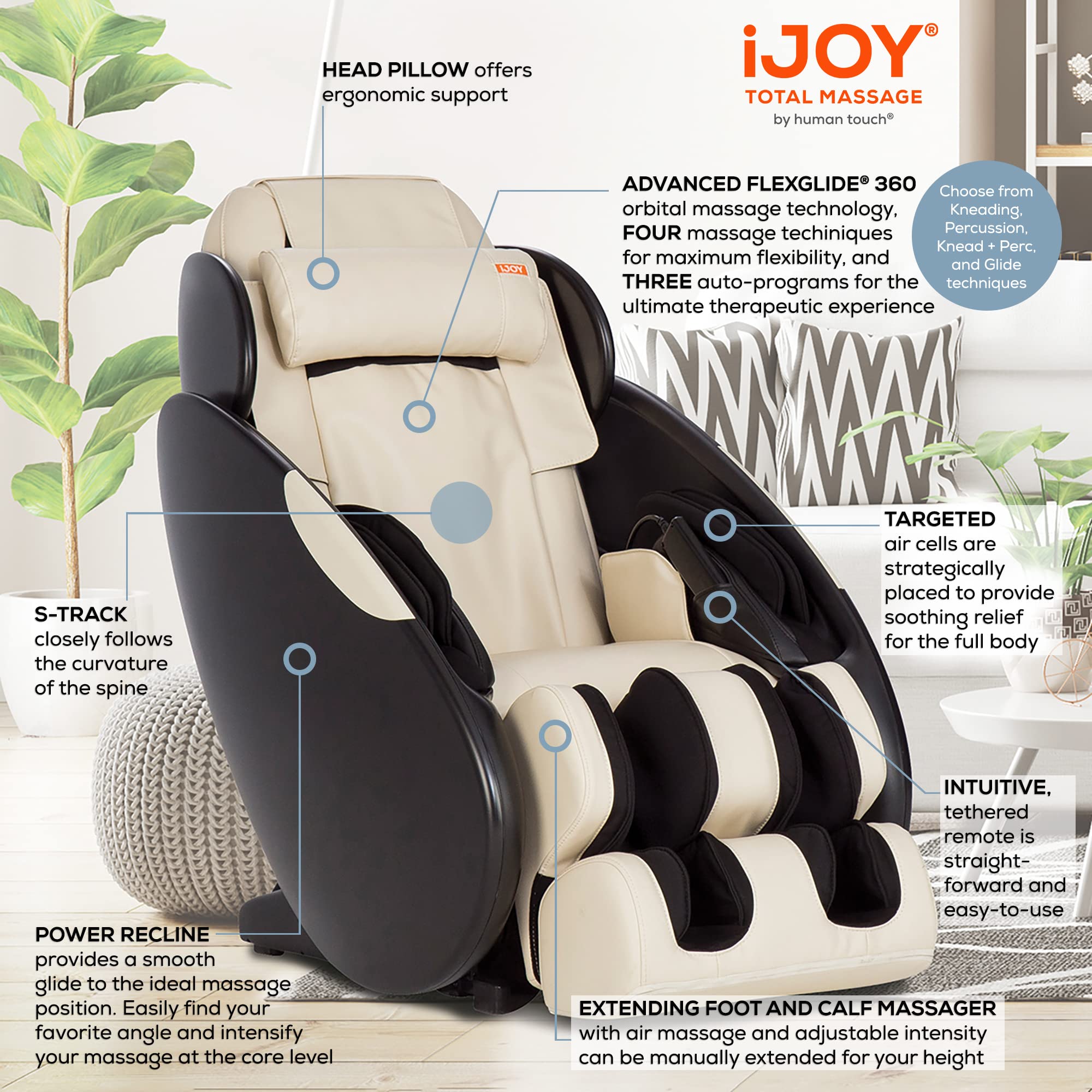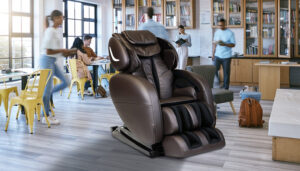Chair massage involves a short, seated massage session focusing on the back, shoulders, neck, and arms. It’s designed for quick relief and relaxation in settings like offices or events.
Embracing the fast-paced nature of modern life, chair massages offer a quick reprieve from daily stressors without the need for extensive preparation or disruption to one’s schedule. They are effective in delivering immediate relaxation and are a popular wellness choice in workplaces and public events due to their accessibility and convenience.
This type of massage is typically performed over clothing, making it an easily approachable service for those new to massage therapy or short on time. Chair massages not only provide a burst of relaxation but can also improve circulation, boost energy levels, and reduce muscle tension. Perfect for the bustling environment of today’s society, chair massages serve as an oasis of calm, demonstrating an affordable luxury that is both beneficial and adaptable to a variety of settings.

Credit: pedicurespasuperstore.com
Essentials Of Chair Massage
Do your shoulders feel like concrete? Does your neck seem glued in place? Enter the world of chair massage, the superhero of short breaks. This gem squeezes wellness into busy schedules. Let’s unlock the essentials of this quick fix!
Defining Chair Massage
A chair massage is a style of seated massage. It focuses on the head, neck, shoulders, back, and arms. The best part? It’s fully clothed and equipment-friendly.
- Client sits in a specially designed chair.
- They lean forward into a chest support pad.
- Therapist targets tension hot spots.
- Session lasts 10 to 30 minutes.
Benefits Of Quick, Seated Relief
This service isn’t just quick. It’s a powerhouse of perks:
| Benefits of Chair Massage |
|---|
| Reduces stress |
| Decreases anxiety and depression |
| Increases focus and energy |
| Boosts immune system |
| Improves circulation |
| Eases muscle tension |
| Relieves repetitive strain injuries |
Chair massages work wonders for morale. Employees feel valued. Productivity gets a spike. It brings the spa to your space!
Setting The Stage
Setting the Stage for a chair massage begins with attention to detail. The physical environment impacts the client’s experience, creating comfort and relaxation even before the massage starts. Let’s explore how to perfect this setup.
Choosing The Right Chair
Selecting an appropriate chair is crucial for a successful chair massage. Factors to consider include:
- Adjustability: Chairs should adapt to various body sizes and shapes.
- Stability: A sturdy chair ensures safety and comfort for the client.
- Padding: Adequate cushioning supports relaxation during the massage.
- Portability: If traveling, choose a chair that’s easy to carry and set up.
Creating A Relaxing Environment
The ambiance plays a vital role. Follow these tips:
- Lighting: Dim lights or use candles to soften the mood.
- Music: Select calm, soothing tunes at a low volume.
- Aromatherapy: Introduce pleasant scents via diffusers or essential oils.
- Temperature: Ensure the room is neither too warm nor too cold.
| Element | Tips for Optimizing |
|---|---|
| Chair | Ensure adjustability, stability, comfort, and ease of transportation. |
| Ambiance | Use lighting, music, and scent to create a serene environment. |
Mastering The Techniques
Learning the art of chair massage requires practice and understanding of key techniques. A good chair massage can ease stress, reduce tension, and improve circulation. To provide a memorable experience, you need to master the essential strokes and movements. Moreover, it’s crucial to identify and target common tension points in the body.
Basic Movements And Strokes
Chair massages focus on the upper body. Knowing basic hand techniques is essential. Emphasize rhythm and pressure for the best results.
- Effleurage: Begin with gentle sliding movements. These warm up the muscles.
- Petrissage: Use kneading movements. They work deeper into the muscle tissue.
- Compression: Apply direct pressure. This method relieves deeper tension.
- Tapotement: Use tapping or percussion. It stimulates the nerves and invigorates the body.
Combine these techniques in a smooth, flowing manner. Adjust your approach based on the individual’s feedback and comfort level.
Addressing Common Tension Points
| Tension Point | Technique | Benefit |
|---|---|---|
| Shoulders | Petrissage and Compression | Reduces stress, improves mobility |
| Neck | Effleurage and Gentle Stretching | Relieves stiffness, enhances flexibility |
| Back | Compression and Effleurage | Fosters relaxation, aids in circulation |
| Arms | Effleurage and Petrissage | Diminishes fatigue, encourages flow |
Communication with your client is key. Ask for feedback during the massage. Focus on their tension points with care and attention. Moist heat or cold therapy can also be integrated depending on their needs. Remember to use a firm but gentle grip to prevent discomfort.

Credit: pedicurespasuperstore.com
Conducting The Session
Mastering the art of chair massage makes every session impactful. Conducting the session with skill ensures both comfort and rejuvenation for the receiver. Implementing an effective sequence and maintaining clear communication are key components. Let’s delve into these crucial steps.
Determining Sequence And Duration
Every chair massage session requires a thought-out approach. Start by assessing the receiver’s needs. Focus on areas that need attention. Remember, each session can vary in duration. Typically, a chair massage lasts between 10 to 30 minutes. Here’s what to consider:
- Time constraints: How long does the receiver have?
- Primary focus areas: Shoulders? Neck? Back?
- Overall goal: Relaxation? Pain relief?
Create a sequence that caters to these factors. Begin with general strokes. Progress to specific problem areas. This strategic flow maximizes the benefits in the time available.
Interactive Communication With The Receiver
Dialogue is foundational. Initiate conversation with the receiver before starting. Ask about discomfort levels and areas of concern. Keep the communication flowing:
- Check in regularly. Ask for feedback on pressure.
- Adjust techniques based on response.
- Encourage the receiver to inform you if any technique feels uncomfortable.
Effective communication during the session allows for tailoring the massage to the receiver’s immediate needs. Their feedback is instrumental in providing a beneficial chair massage experience.
Advanced Tips For Practitioners
Mastering chair massage involves more than just technique; it’s about creating a holistic experience. With our advanced tips, practitioners can elevate their service to an exceptional level. Explore these insights to enhance your practice and leave clients feeling profoundly relaxed and rejuvenated.
Incorporating Aromatherapy And Music
Aromatherapy and music can transform any massage session. Here’s how to integrate them effectively:
- Select essential oils wisely. Lavender promotes relaxation. Peppermint energizes. Choose based on your client’s needs.
- Use a diffuser for even distribution without overwhelming the senses.
- Create a playlist with calming, instrumental pieces to aid in stress relief.
- Match the music’s rhythm to your massage pace for synergy.
Staying Ergonomic To Maximize Relief
Practitioners must also care for their own well-being. Staying ergonomic is crucial:
- Keep your back straight and bend from the hips to prevent strain.
- Use body weight, not just arm strength, for deeper pressure.
- Adjust the chair to keep clients within arm’s reach without stretching.
- Take regular breaks to stretch and realign your posture.

Credit: www.amazon.com
Aftercare And Follow-up
Imagine feeling relaxed after a soothing chair massage. But what happens next? Good aftercare ensures your body holds onto that calm. Follow-up sessions keep the relaxation going. Let’s discover how to do aftercare and plan more sessions correctly.
Advice Post-massage
Once your chair massage is complete, your body feels great. Remember these tips:
- Stay hydrated: Drink water to flush toxins.
- Relax your muscles: Avoid strenuous activities.
- Eat light: Choose healthy snacks over heavy meals.
- Rest well: Sleep helps your body heal.
Scheduling Future Sessions
Regular massages work best. Here’s how to plan:
| Session Interval | Plan |
|---|---|
| Weekly | Great for ongoing stress. |
| Bi-Weekly | Good for maintenance. |
| Monthly | Ideal for routine care. |
Book in advance to secure your spot. Stay flexible to adapt to your body’s needs. Your therapist can guide you.
Frequently Asked Questions On How To Chair Massage
How Is Chair Massage Performed?
Chair massage focuses on the neck, shoulders, back, and arms. The recipient sits in a special ergonomic chair, fully clothed. A licensed therapist applies various massage techniques that may include kneading, compression, and tapping to relieve stress and reduce muscle tension.
How Do You Massage Someone In A Chair?
Begin by ensuring the chair is sturdy and the person is comfortable. Apply gentle pressure with your thumbs down their neck and shoulders. Use circular motions on their upper back, and knead any tense areas. Finish with light strokes down the arms to promote relaxation.
How Do You Prepare For A Chair Massage?
To prepare for a chair massage, wear comfortable clothing and remove any bulky jewelry. Arrive early to relax and discuss any specific needs with your masseuse. Stay hydrated, but avoid large meals before the session. Breathe deeply during the massage to aid muscle relaxation.
How Effective Are Chair Massages?
Chair massages are highly effective for quick stress relief and can improve mood, reduce anxiety, and alleviate muscle tension.
Conclusion
Mastering chair massage techniques can significantly enhance your skill set. This guide aims to make learning accessible and enjoyable. Embrace these methods and witness the comfort you bring to clients. For continued success, practice regularly and stay informed on the latest trends.
Elevate your chair massage game now!



